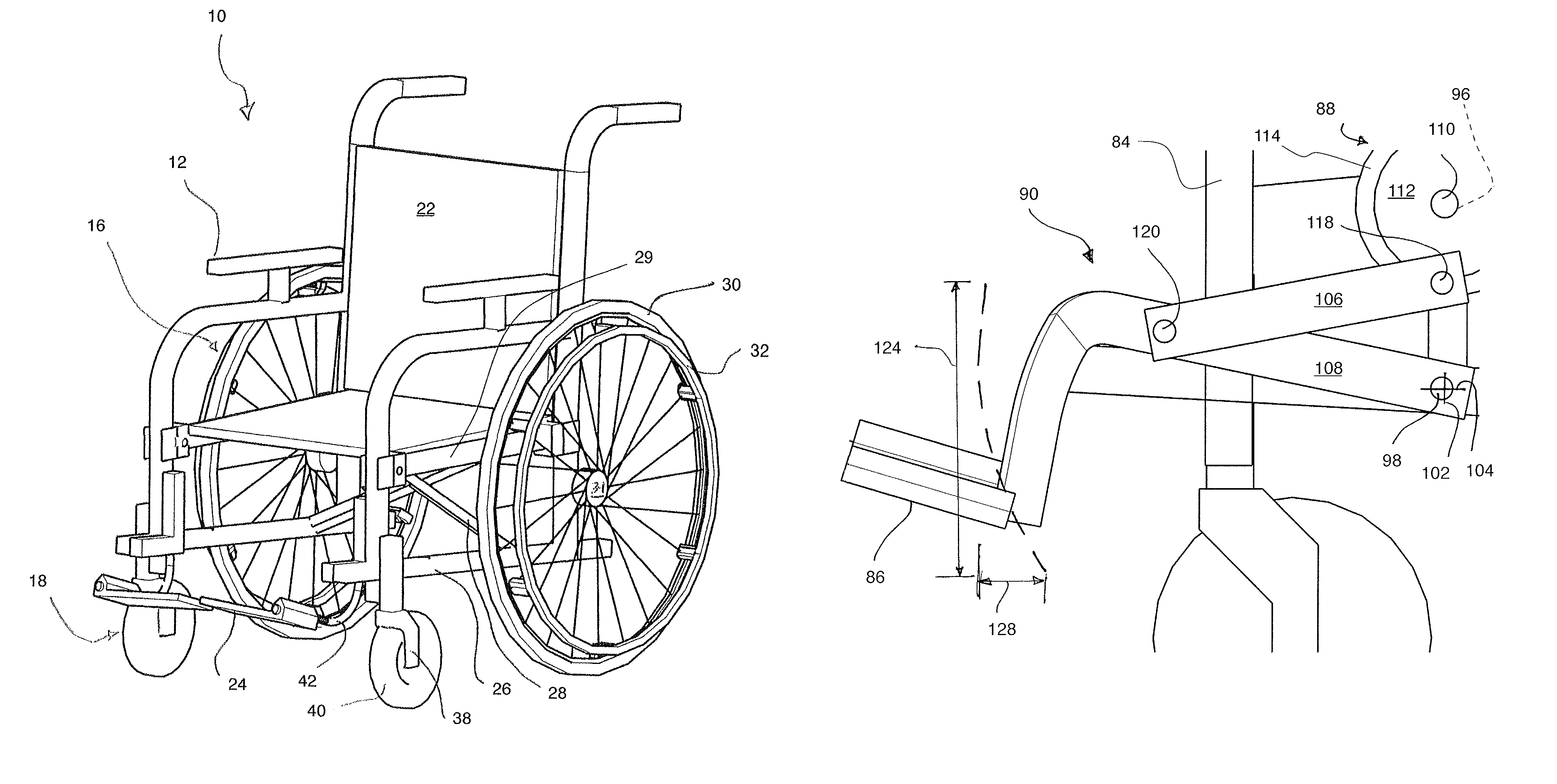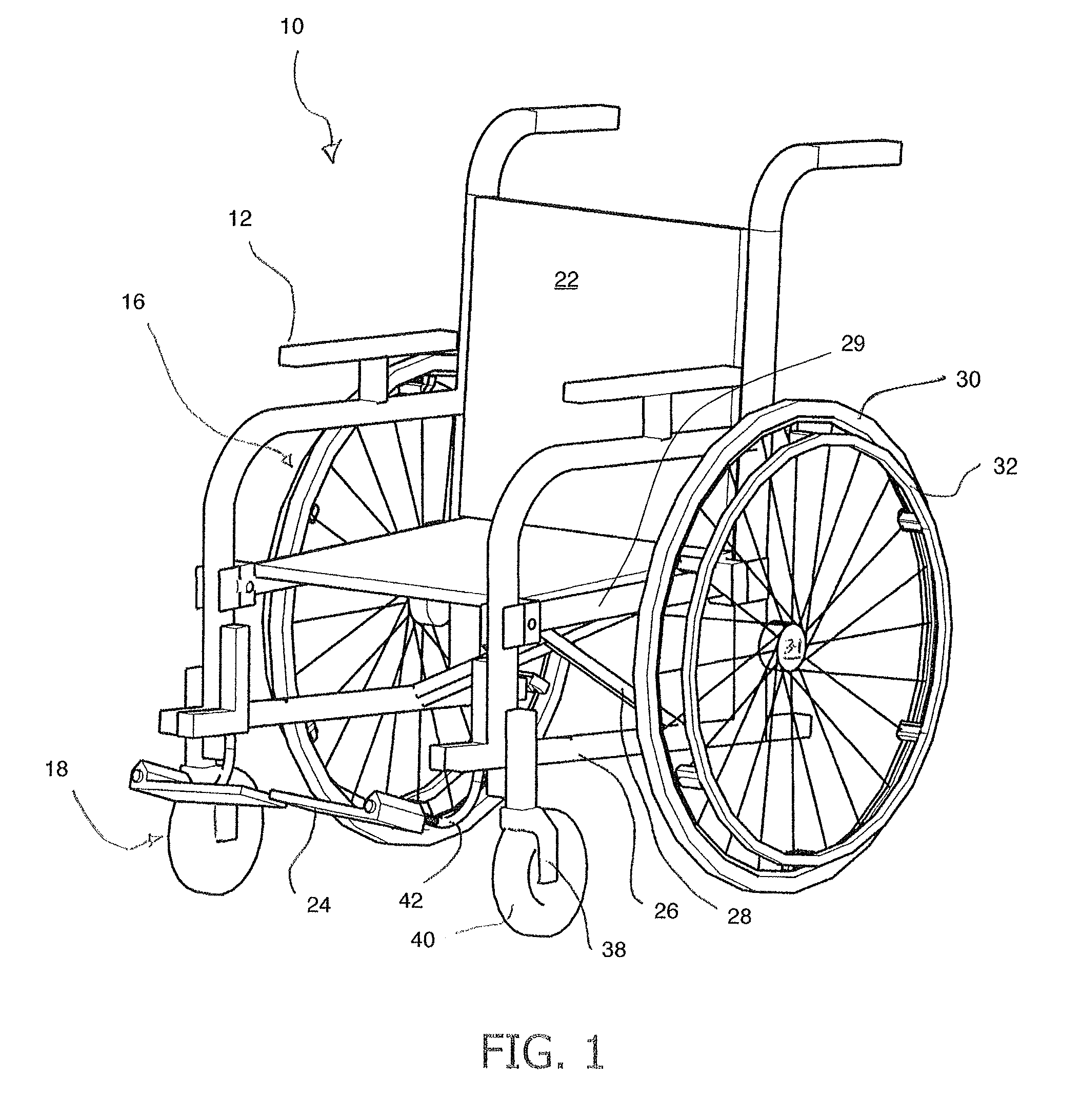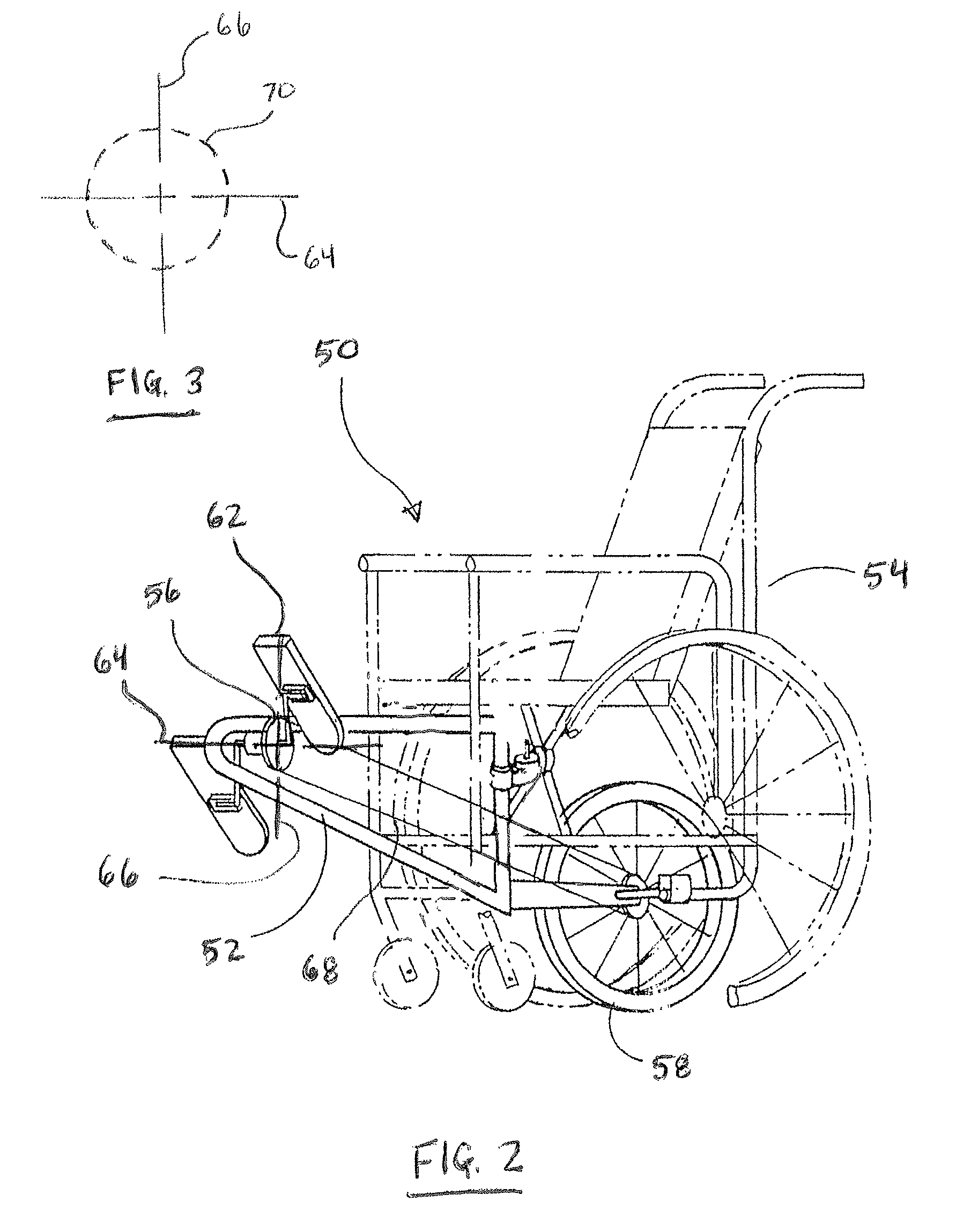Atrophy-reducing movable foot support apparatus
a technology of movable feet and foot supports, which is applied in the field of wheelchairs, can solve the problems of wheelchair users who are not able to move their legs on their own, the footrest system is locked in a fixed position, and the wheelchair user's legs may contract the ligaments of the leg joint, so as to achieve the effect of reducing atrophy and superior results for maintaining the leg muscle mass of wheelchair users
- Summary
- Abstract
- Description
- Claims
- Application Information
AI Technical Summary
Benefits of technology
Problems solved by technology
Method used
Image
Examples
Embodiment Construction
[0024]Referring to FIG. 1, one embodiment of a conventional wheelchair 10 includes a frame 12, rear wheel assemblies 16 rotatably mounted to the frame 12, front caster assemblies 18 pivotally mounted to the frame 12, and a seat assembly 22 and footrests 24 that are fixedly mounted to the frame 12.
[0025]The frame 12 includes side frames 26 joined by pivotally connected crossbars 28. The crossbars 28 have upper and lower ends, the lower end of each crossbar 28 being pivotally connected to a lower horizontal structural member of a corresponding side frame 26 and the upper end of each crossbar 28 being pivotally connected to a longitudinal bar 29 that is slidingly attached to vertical structural members of the other side frame 26. The side frames 26, the pivotally connected crossbars 28, and the longitudinal bars 29 are arranged so as to permit collapsing motion of the side frames 26 toward each other and deploying motion of the side frames 26 away from each other. Each side frame 26 ty...
PUM
 Login to View More
Login to View More Abstract
Description
Claims
Application Information
 Login to View More
Login to View More - R&D
- Intellectual Property
- Life Sciences
- Materials
- Tech Scout
- Unparalleled Data Quality
- Higher Quality Content
- 60% Fewer Hallucinations
Browse by: Latest US Patents, China's latest patents, Technical Efficacy Thesaurus, Application Domain, Technology Topic, Popular Technical Reports.
© 2025 PatSnap. All rights reserved.Legal|Privacy policy|Modern Slavery Act Transparency Statement|Sitemap|About US| Contact US: help@patsnap.com



